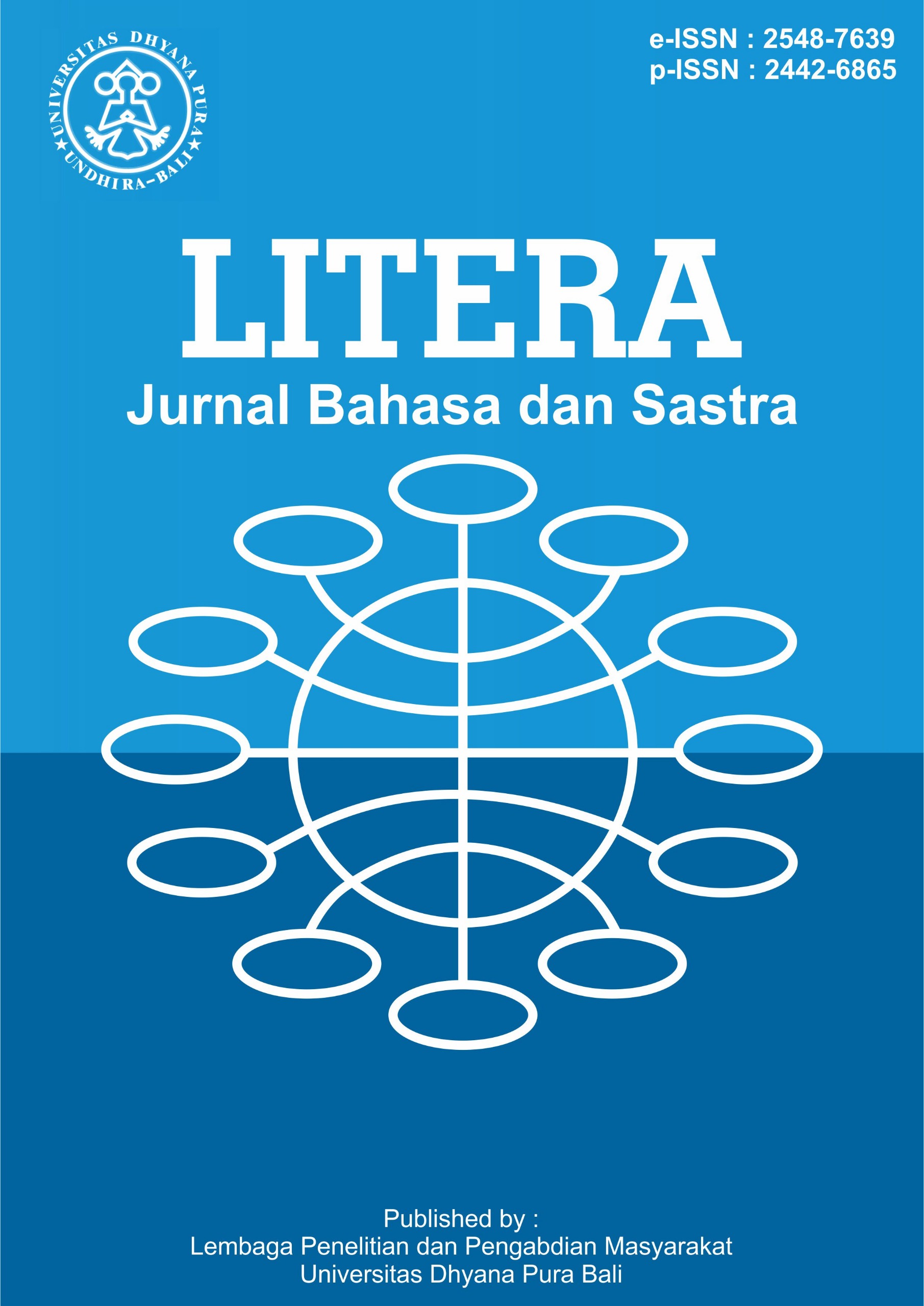Presupposition and Assertion of The Main Character in The School for Good and Evil Novel
DOI:
https://doi.org/10.36002/litera.v11i2.3967Keywords:
Assertion, Fantasy Novel, PresuppositionAbstract
In writing a literary work, every sentence created by a writer has a purpose of conveying information to the readers, which can be understood by analyzing the presupposition and assertion within each sentence. In this sense, the present study aims on examining how information is organized in the fantasy novel The School for Good and Evil, specifically portraying through the main character. The data for this study was taken from the main character’s utterances within dialogues in the novel, limited to the sentence-level forms. To collect the data from the novel, a documentation method with stratified sampling technique was applied. In this case, the story was divided into five different plot stages with five utterances were selected for each strata, resulting in a total of 25 data for the analysis. Additionally, the present study also applied a qualitative method following the theory of information structure by Lambrecht (1994). These elements were examined to understand how information is structured and what is assumed to be known or introduced as new to the readers. In the result, it revealed that the writer intentionally organize sentences to share information regarding the story in the main character’s utterances throughout the narrative.
Downloads
References
Damayanti, P. A. D. (2023). Presupposition Used by Mia Jenrow in the Novel Kisses and Croissant [Undergraduate Thesis]. Universitas Udayana.
Darmasetiyawan, I. M. S. (2010). Translation Equivalence of Information Structure and Text-Forming Devices in the Novel Dracula [Thesis]. Universitas Udayana.
Hasanah, I. S. (2023). Plot Elements Analysis of No Exit Novel by Taylor Adams [Thesis]. Universitas Teknokrat Indonesia.
Lambrecht, K. (1994). Information Structure and Sentence Form: Topic, Focus, and the Mental Representation of Discourse Referents. https://books.google.co.id/books?hl=en&lr=&id=GhrWzz3mKOEC&oi=fnd&pg=PA74&dq=lambrecht+1994+information+structure&ots=qHGXenU_FM&sig=a5Wm74mj1fKXVZ3L4iaC-MdLQfI&redir_esc=y#v=onepage&q=lambrecht%201994%20information%20structure&f=false
Martínez-Mesa, J., González-Chica, D. A., Duquia, R. P., Bonamigo, R. R., & Bastos, J. L. (2016). Sampling: How to select participants in my research study? An Bras Dermatol, 91(3), 326–330. https://doi.org/10.1590/abd1806-4841.20165254
Matić, D. (2015). Information Structure in Linguistics. In International Encyclopedia of the Social & Behavioral Sciences (pp. 95–99). Elsevier. https://doi.org/10.1016/B978-0-08-097086-8.53013-X
Perkasa, A. (2020). The Study of Presupposition in the Movie Script The Maze Runner 3 [Undergraduate Thesis]. Universitas Udayana.
Downloads
Published
How to Cite
Issue
Section
License
Copyright (c) 2025 LITERA : Jurnal Bahasa Dan Sastra

This work is licensed under a Creative Commons Attribution-NonCommercial-ShareAlike 4.0 International License.
![]()
This work is licensed under a Creative Commons Attribution-NonCommercial-ShareAlike 4.0 International License.
















